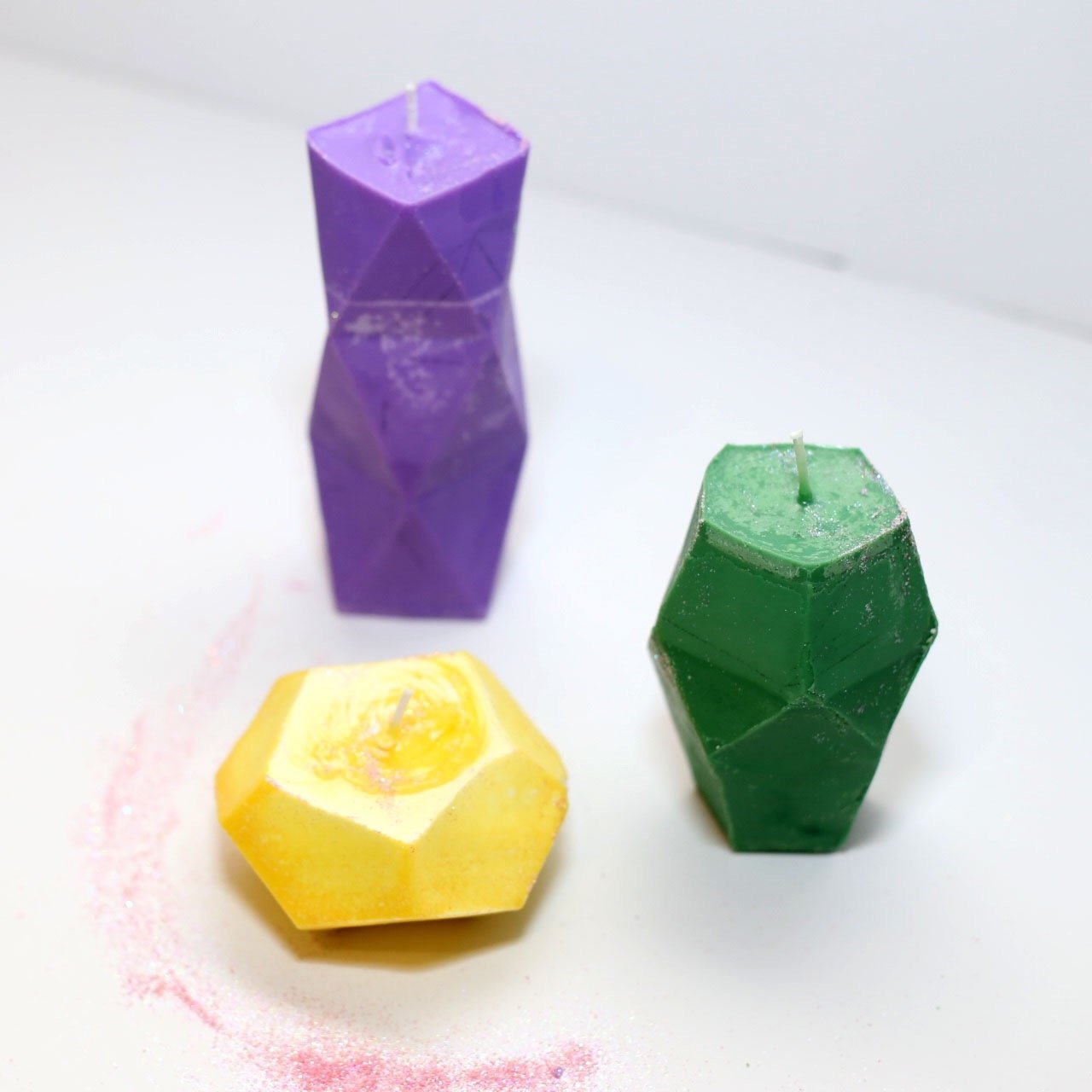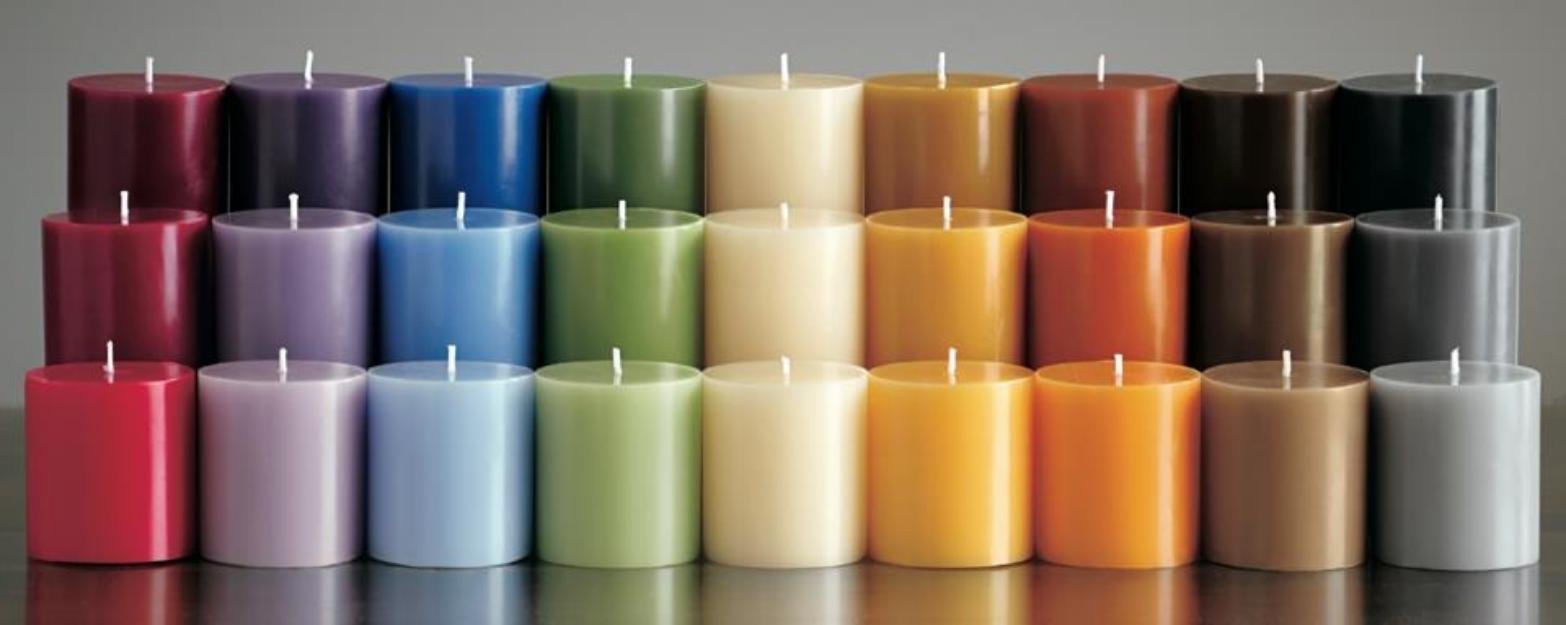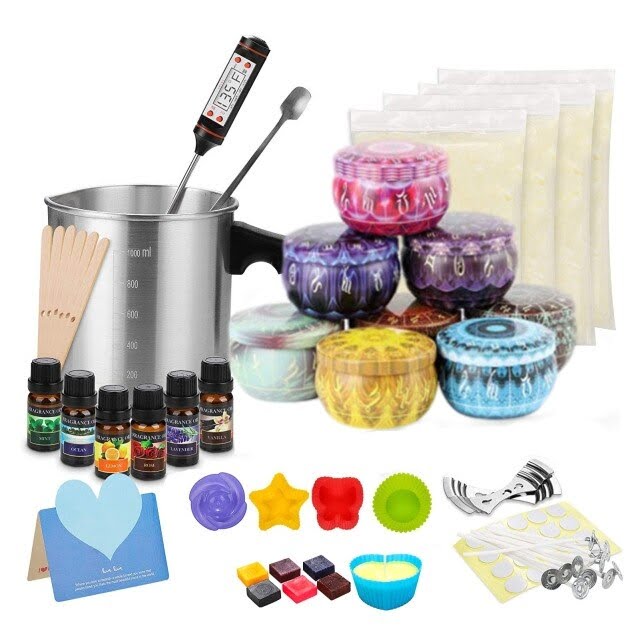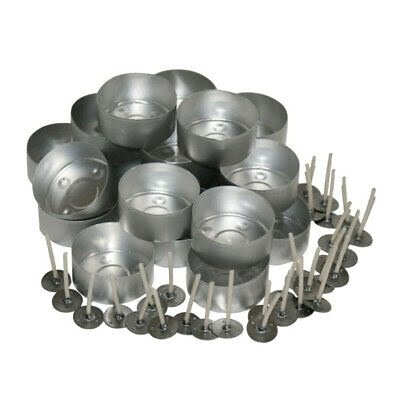Are you interested in creating your own beautiful, fragrant candles? Look no further. In this article, we will explore the best candle making tips to help you craft vibrant and unique candles right at home. Whether you are a beginner or a seasoned candle maker, these tips and techniques will ensure that your candles turn out perfect every time.
Candle making is a timeless art that allows for endless creativity and personalization. From choosing the right wax to adding the perfect scent and color, there are several key factors to consider when making your own candles. With the best candle making tips at your disposal, you can create custom candles that not only look beautiful but also smell amazing.
In the following sections, we will delve into the critical decisions of choosing the right wax, selecting essential oils and fragrances, picking the right wicks for an even burn, maintaining the correct temperature, adding vibrant colors, practicing safety measures, troubleshooting common issues and more. So whether you want to create a calming atmosphere in your home or make personalized gifts for loved ones, these tips will guide you through the art of candle making.
Choosing the Right Wax
When it comes to candle making, choosing the right wax is a critical decision that will greatly impact the final product. There are several types of wax to choose from, and each has its own unique qualities and benefits. Here are some tips for selecting the best wax for your candle making needs.
Paraffin Wax
Paraffin wax is a popular choice for many candle makers due to its affordability and ease of use. It can hold a large amount of fragrance and color, making it ideal for scented candles. However, it is important to note that paraffin wax is derived from petroleum, so if you are looking for a more natural option, you may want to consider other types of wax.
Soy Wax
Soy wax is a renewable and eco-friendly option that has gained popularity in recent years. It burns cleanly and slowly, allowing for a longer lasting candle. Soy wax also has excellent scent throw, making it perfect for scented candles. Additionally, soy wax is easy to clean up with soap and water, as it is water soluble.
Beeswax
Beeswax is another natural option that adds a warm honey scent to candles. It has a natural golden color and burns longer than other waxes. Beeswax also emits negative ions when burned which can help purify the air in your home. However, beeswax can be more expensive than other types of wax.
By considering these options and the specific qualities of each type of wax, you can make an informed decision when choosing the right wax for your candle making project. With these best candle making tips on selecting the right wax, you’ll be on your way to creating beautiful and fragrant candles that are perfect for any occasion.
Essential Oils and Fragrances
When it comes to candle making, selecting the right essential oils and fragrances is crucial in creating the perfect scent for your candles. The aroma of a candle can greatly impact a person’s mood and overall experience, making it an important aspect to consider when crafting your own candles. Here are some essential tips for choosing and using essential oils and fragrances in your homemade candles.
Choosing the Right Essential Oils
When selecting essential oils for your candles, it’s important to consider the strength of the scent as well as how well it will blend with other fragrances. Some popular essential oils for candle making include lavender, vanilla, eucalyptus, and lemon. It’s also important to take into account any potential allergic reactions or sensitivities that individuals may have to certain scents.
Blending Fragrances
One of the best candle making tips when it comes to creating the perfect scent is experimenting with blending different fragrances together. This allows you to create unique combinations that cater to different preferences. Keep in mind that certain scents may overpower others, so it’s important to find a balance when mixing fragrances.
Understanding Scent Throw
Scent throw refers to how well a candle releases its fragrance into the surrounding space. Different essential oils and fragrances have varying degrees of scent throw, so it’s important to understand how each oil or fragrance performs in this aspect. Experimenting with different combinations and concentrations can help you achieve optimal scent throw for your candles.
Selecting the Right Wicks
When it comes to making candles, selecting the right wicks is essential to ensure an even and consistent burn. The type and size of wick you choose can significantly impact the performance of your candles. Whether you are making container candles or pillars, choosing the right wick is crucial. Here are some tips for selecting the best wicks for your candle making project:
- Consider the diameter of your candle: The size of your candle will determine the type of wick you need. For larger diameter candles, you will need a larger and thicker wick to ensure an even burn. Smaller diameter candles require thinner wicks that can provide a steady flame without drowning in wax.
- Choose the right material: Wicks come in a variety of materials including cotton, paper, wood, and more. Cotton wicks are a popular choice for many candle makers due to their clean burn and minimal soot production. Wood wicks offer a unique crackling sound while burning, perfect for creating an ambient atmosphere.
- Test different wicks: It’s important to experiment with different wick sizes and materials to find the best option for your specific candle recipe. Conducting burn tests with various wicks will help you determine which one provides the most even burn and desirable flame height.
By carefully considering the diameter of your candle, choosing the right material, and conducting thorough testing, you can select the best wicks for your candle making project. Remember that each type of candle may require a different type of wick, so don’t be afraid to try out new options until you achieve the desired results.
In addition to selecting the right wick, it’s important to properly prime your chosen wicks before using them in your candles. This process involves treating the wick with wax to ensure a clean and consistent burn. Properly priming your wicks will help prevent mushrooming and soot formation while also improving their overall performance. Once you have selected and primed the perfect wick for your candles, you can enjoy beautiful, consistent burns in all of your handcrafted creations.
The Importance of Temperature and Equipment
When it comes to creating beautiful, high-quality candles, the importance of temperature and equipment cannot be overlooked. The right temperature and the proper tools are crucial in ensuring that your candles turn out just the way you want them. Here are some tips for achieving the best results when it comes to temperature and equipment in candle making:
- Use a reliable thermometer: One of the most important tools in candle making is a good quality thermometer. This will allow you to monitor the temperature of your wax, ensuring that it is at the right temperature for adding fragrance and coloring.
- Double boiler method: Using a double boiler when melting your wax is essential for maintaining an even temperature. This method helps to prevent hot spots and ensures that the wax melts evenly.
- Be mindful of room temperature: The temperature of the room where you are making your candles can also impact the process. Keep in mind that extreme cold or heat can affect how your candles set, so try to work in a space with a consistent, moderate temperature.
In addition to keeping an eye on the temperature, having the right equipment is also key to successful candle making. Here are some essential tools of the trade that every candle maker should have:
- Pouring pitcher: A pouring pitcher with a spout makes it easy to pour your melted wax into containers without making a mess.
- Stirring utensils: Having dedicated stirring utensils for mixing in fragrance oils and coloring will help prevent cross-contamination of scents and ensure even distribution.
- Candle molds or containers: Depending on the type of candles you want to make, having the right molds or containers is essential for creating professional-looking candles.
By paying close attention to temperature and using the right equipment, you can elevate your candle making skills and create beautiful, fragrant candles that you can be proud of. These tips will help you achieve consistent results and produce candles that are both visually appealing and delightful to smell.
Adding Color
When it comes to candle making, adding color to your creations can significantly enhance their visual appeal. Whether you prefer bold, vibrant hues or subtle, pastel tones, there are several tips and techniques you can use to achieve the perfect look for your candles.
One of the most popular methods for adding color to candles is using liquid dye. This type of dye is specifically formulated for use in candles and can be easily mixed into the melted wax to achieve your desired color.
It’s important to start with a small amount of dye and gradually add more until you achieve the shade you want. Remember that the color of the liquid dye may change slightly once it has been added to the wax and cooled, so it’s best to perform a test burn before making a large batch.
Another option for adding color to your candles is using dye chips or blocks. These solid forms of dye are simple to use and allow for easy experimentation with different shades and combinations. Like liquid dye, it’s best to start with a small amount and adjust as needed. Keep in mind that certain dyes may produce more intense colors than others, so it’s always a good idea to read the instructions provided by the manufacturer.
For those who prefer natural options, consider using botanicals or spices to add color to your candles. For example, finely ground herbs like lavender or chamomile can impart beautiful speckles of color throughout the wax when added at the right temperature. Be sure to research which botanicals are suitable for candle making and test them in small quantities before incorporating them into larger batches.
| Coloring Method | Tips |
|---|---|
| Liquid Dye | Start with a small amount and gradually add more until achieving desired shade |
| Dye Chips/Blocks | Read instructions from manufacturer as some may produce more intense colors than others |
| Botanicals/Spices | Research suitable options and test in small quantities before incorporating into larger batches |
Safety First
When it comes to candle making, safety should always be a top priority. Working with hot wax, open flames, and potentially hazardous materials requires careful attention to detail and adherence to best practices. Here are some of the best candle making tips for ensuring a safe and enjoyable crafting experience.
First and foremost, always work in a well-ventilated area. Whether you’re melting wax, adding fragrances, or pouring your candles, good ventilation is essential for dispersing any fumes that may be produced during the process. This can help prevent respiratory issues and ensure a comfortable working environment.
In addition, it’s crucial to use appropriate safety equipment. This includes wearing heat-resistant gloves when handling hot wax, using safety goggles to protect your eyes from splashes or spills, and having a fire extinguisher on hand in case of an emergency. Investing in these safety measures can provide peace of mind and help prevent accidents while making candles.
Lastly, never leave hot wax or a burning candle unattended. It’s easy to become distracted during the candle-making process, but doing so can lead to dangerous situations. Always stay focused on the task at hand and never leave your workspace until all materials have been safely put away. By following these best practices for candle making, you can enjoy creating beautiful candles while prioritizing safety every step of the way.
| Candle Making Safety Tip | Description |
|---|---|
| Work in a well-ventilated area | Using good ventilation helps disperse fumes and prevents respiratory issues |
| Use appropriate safety equipment | This includes heat-resistant gloves, safety goggles, and a fire extinguisher for emergencies |
| Never leave hot wax or burning candles unattended | Always stay focused on the task at hand to prevent accidents |
Troubleshooting
When making candles, it’s not uncommon to encounter some common issues along the way. Knowing how to troubleshoot these problems can make all the difference in creating a beautiful and functional candle. Whether you’re dealing with uneven burning, poor scent throw, or other issues, there are solutions that can help you salvage your creation.
One common issue that many candle makers face is tunneling, where the wax burns down the center of the candle, leaving a ring of unmelted wax around the edges. To prevent tunneling, it’s important to choose the right size wick for your candle and ensure that you allow it to burn long enough for the entire surface to liquify each time you light it.
Additionally, using a high-quality wax with a proper melt pool can also help prevent this issue.
Another frequent problem is poor scent throw, where the aroma of the candle is not as strong as desired. The key to achieving a strong scent throw lies in using high-quality essential oils or fragrances specifically designed for candle making. It’s important to follow recommended usage rates and be mindful of other factors such as wax type, pour temperature, and curing time.
Additionally, frosting, cracking, or air bubbles in candles are common concerns that can detract from their appearance. These issues often stem from improper pouring temperatures or inadequate cooling times. Paying close attention to these factors and experimenting with different methods can help you achieve smooth and flawless-looking candles. By implementing these best candle making tips for troubleshooting common issues effectively enhances your experience and product quality.
Conclusion
In conclusion, crafting your own beautiful and fragrant candles can be a rewarding and satisfying experience. By following the best candle making tips outlined in this article, you can ensure that your candles turn out exactly as you envision them. From choosing the right wax to selecting the perfect essential oils and fragrances, every step in the candle making process is crucial to achieving a high-quality final product.
By paying close attention to details such as selecting the right wicks for an even burn, controlling the temperature, and using the proper equipment, you can avoid common issues that may arise during candle making. Additionally, adding color to your candles can help you create unique and vibrant designs that will make your creations stand out.
It’s important to remember that safety should always be a priority when making candles. By following best practices for candle making, such as working in a well-ventilated area and being cautious when handling hot wax and equipment, you can ensure a safe and enjoyable candle making experience. With these best candle making tips in mind, you can embark on your candle making journey with confidence and creativity.
Frequently Asked Questions
What Not to Do When Making Candles?
When making candles, it’s important not to overheat the wax, as it can be a safety hazard. Additionally, using too much fragrance oil can lead to poor burning and scent throw.
How Can I Make My Candles More Effective?
To make your candles more effective, consider using high-quality waxes and fragrance oils. Properly wicking your candles will also ensure an even burn and optimal scent throw.
What Is the Secret to Good Smelling Candles?
The secret to good smelling candles lies in using high-quality fragrance oils and properly measuring and adding them to your wax. Additionally, allowing the candles to cure for a few days will enhance their scent throw.

Welcome to my candle making blog! In this blog, I will be sharing my tips and tricks for making candles. I will also be sharing some of my favorite recipes.





